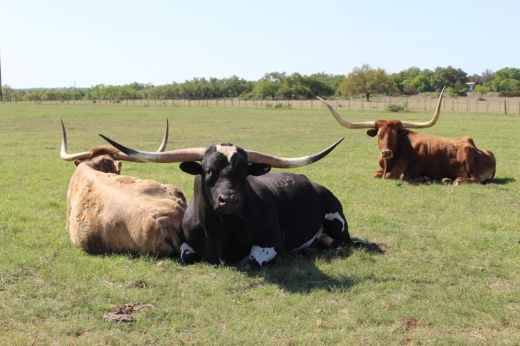Both Travis County and Hays County have been under drought conditions for the past three to six years.
As of press time, most of Travis and Hays County are in Stage 3, extreme drought conditions. Some areas of Hays County, including western Dripping Springs, are under Stage 4, the most extreme drought category, according to the U.S. Drought Monitor.
The details
Residents that are on municipal services get their water from the Highland Lakes in Austin, but residents not on city utilities have to use wells, which get water from local underground aquifers. These local aquifers rely on being refilled, or recharged, through rainfall, meaning long periods of drought can impact how much water is in the aquifer and, therefore, how much is available for use, said Charlie Flatten, general manager of the Hays Trinity Groundwater Conservation District.
“That’s why rains have produced lovely effects on plants and trees, but not the aquifers,” he said. “We need a lot more rain a lot more frequently.”
The Lower Trinity Aquifer, which serves Dripping Springs, has a slower recharge rate because of its small pores and how deep it is below the surface, he said.
Even if the region does get rain, the rainfall only flows down into recharge zones, such as creek beds, after the soil and plants have absorbed as much water as they can, Flatten said.
As of March 31, U.S. Drought Monitor officials are predicting the drought will persist this summer, meaning less possibility of recharge opportunities for the aquifer, impacting long-term availability.

Joe Kanetzky, a longhorn cattle rancher in Dripping Springs, said he’s accustomed to adapting to long droughts.
He said he adapts by ensuring he has enough native grasses, better suited for the drier climate, for his cattle to graze on. His 270-acre ranch operates as a “grass factory” for his cattle, meaning fatter, better-selling cattle.
Persistent drought can lead to issues with feed, such as grass and hay availability. With less feed available, that means reducing herd sizes because of increased costs for alternative feed and water sources, according to the U.S. Department of Agriculture. USDA monthly data reports also show the cattle market becoming more expensive for both ranchers and consumers.
Kanetzky said he had to drop his well down further in the aquifer about 10 years ago as more development came to his neighborhood. If he needs more water, he will have to redrill into the aquifer, he said.

“Two or three years [from now], if we’re in the same weather pattern ... then it will be 911, and in order for our business to be sustainable, I have to be able to address that as it happens or in advance of it happening,” he said.
Killough has advocated for water conservation in the area, saying conservation efforts are especially important as the county tries to balance development and water availability.
“Ground water is a finite resource with the amount of rain that we're getting,” he said. “It doesn't matter how much we want to grow and how much we want to develop—if there is no water, it won't happen. That is an ongoing and pressing discussion for all levels, and that will impact all of us.”

Flatten said that less rain paired with the growth of both counties contributes to the issue.
Wells rely on adequate aquifer levels to refill, but with more development comes more demand. This can prevent the aquifer from recharging at a rate sufficient to support residences and businesses, said Jim Blair, owner of well drilling service Bee Cave Drilling.
Demand is also not shared evenly, with larger commercial businesses requiring more water for operations, he said.
People may have to drill deeper into the aquifer if their well is at a dry spot, Blair said. This can be expensive, creating a barrier to accessing water.
“As long as you have enough money, you can have all the water you need,” he said.
However, drilling deeper is not a long-term solution, Flatten said, as the “aquifer doesn’t go to the center of the Earth.”

Going Foward
Residents and local businesses are working on solutions such as smaller-scale rainwater harvesting and planting native species in the wake of water availability issues.
Dripping Springs Big Country neighbors are working on an initiative to rehydrate the land through rainfall catchment and planting native species. These methods can help reduce reliance on wells and have people use plants better suited for their climate.
Resident Annie Spade and permaculturalist Kiran Topiwala who are part of the project said rainwater catching and understanding native plants can allow people to take advantage of rainfall. Permaculture refers to a type of land management that mimics natural ecosystems.
“We’re just like, ‘Oh, great, it’s raining,’ but yet, what’s happening to that water?” she said. “It’s just taking what little topsoil we have and just running off and it’s gone.”
Topiwala said being intentional about water conservation and land management can help mitigate the issues with water availability.
“We’re just groups of people who care about the environment that want to see better stewardship of the land that we live on, that way our wells don’t dry off,” he said.
The future of water availability in Hays County could be impacted by bills currently in the Texas Legislative session. This includes a bill that would increase revenue for HTGCD, while another would decrease regulation of groundwater wells serving the public.





